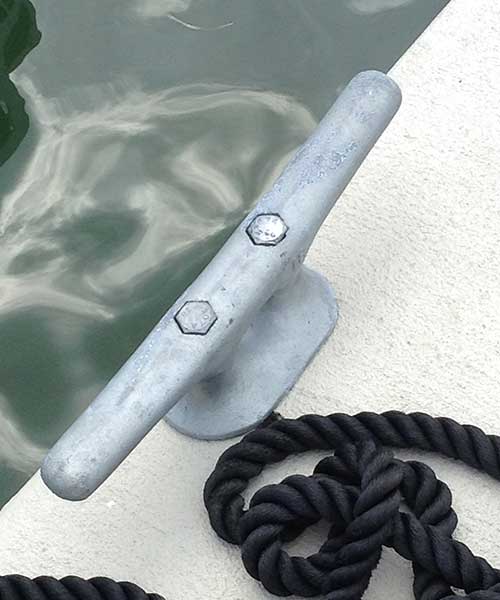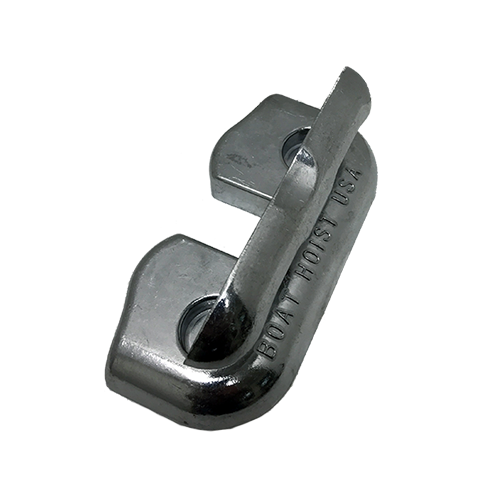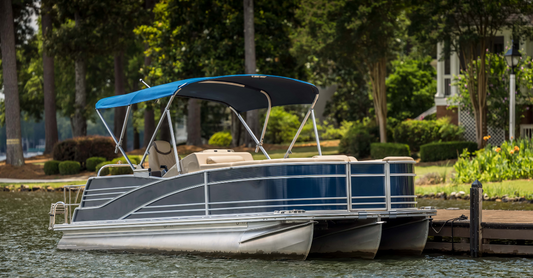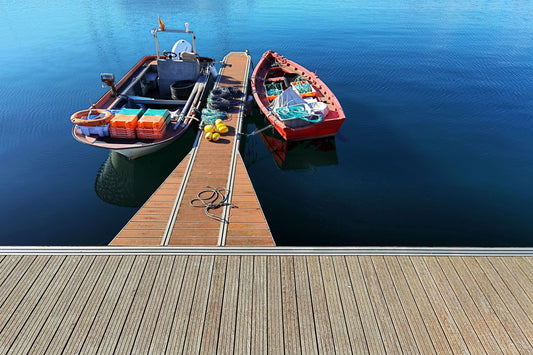CLEATS
Dock cleats are essential for safely securing boats and vessels to docks, preventing drifting and collisions. Haven Dock & Marine offer various styles including solar cleats with built-in lights for visibility at night.
-
Aluminum S Cleats
Regular price Starting at $24.00 - $83.00Regular priceUnit price / per- Length options: 10”, 12”, 15”, and 18”
- Significant resistance to water, salt, weather, and corrosion
- Wide spacing of easy-access bolts to enhance load bearing capabilities
-
Heavy Duty Galvanized Cleats
Regular price Starting at $32.00 - $129.00Regular priceUnit price / per- Choose from 10”, 12”, 15”, and 18” sizes
- Suitable for all types of watercraft
- Made from malleable iron for long-lasting support and improved corrosion resistance
-
Galvanized Cleats
Regular price Starting at $4.00 - $42.00Regular priceUnit price / per- Available in 6”, 8", 10”, 12”, and 14” to accommodate various vessel sizes
- Heavy galvanized, coated iron, open base cleats
- Ideal for vertical or horizontal mounting on piers and docks
-
Flip Up Cleats
Regular price Starting at $26.00 - $42.00Regular priceUnit price / per- Sturdy marine-grade aluminum
- Available in 6” and 8” to meet various dock needs
- Cleats folds flat when not in use
-
Lake Lite Solar Powered Lighted Cleat – 10″
Regular price Starting at $100.00Regular priceUnit price / per- 10" Solar powered cleat
- Anodized marine-grade aluminum
- Each cleat can provide 14 to 18 hours of light on a full charge
TYPES OF MOORING CLEATS
There are numerous types of marine mooring cleats you can choose from. The size of the cleats you need will depend upon the size of your boat. The rule most boaters follow is that the length of the cleat should be one inch for every sixteenth of an inch of dock line. If you’re unsure about which size is best, have a dock professional help you. Now let’s take a look at some of the mooring cleats you can use.
STANDARD STYLE DOCK CLEAT
The standard style or horn dock cleat is the most common type of docking cleat you’ll find. It comes in several different materials, including
- Aluminum
- Cast iron
- Galvanized metal
- Nylon
- Stainless steel
Horn dock cleats are heavy-duty, except for nylon cleats.
They’re also the most affordable of all the docking cleats, which is why you can usually never go wrong with this style.
Plus, they come in various sizes, so you can find ones that suit your needs.
For freshwater, choose galvanized dock cleats, but for saltwater, choose stainless steel dock cleats.
PULL-UP DOCK CLEATS
As the name suggests, pull-up dock mooring cleats lay flat, and you can pull them up when you need them. They are very similar to standard dock cleats, but the pop-up feature means you’re less likely to stub your toes or rip the bottom of your pants on them.
SOLAR DOCK CLEATS
Solar dock cleats come in the standard cleat style, but they have built-in lights to guide you on your dock pathways.
If you don’t use your dock much at night or have other lights on your dock, you won’t need these. But, if you’re someone who often goes fishing late in the evening or early before the sun rises, solar dock cleats are a good option for you.
Although they are more expensive, they are also incredibly useful, especially to help prevent slip and fall accidents.
If they’re outside your budget, consider getting Perko lights installed on your dock instead.
ZIG-ZAG DOCK CLEATS
Zig-zag cleats don’t require you to tie a knot when you moor your boat. You can weave your mooring ropes in a zig-zag-shaped mold.
While this is great for short, temporary stops, you don’t want to tie your boat to this type of dock cleat overnight. The mooring line can slowly loosen and let your boat float free.
They are also good for small boats, like kayaks, and inflatables to use during the daytime.
CLAM DOCK CLEATS
Similar to zig-zag cleats, clam dock cleats are not for overnight mooring. They are designed for small boats and quick stops.
You pull your mooring line through the cleat, then the pressure builds and traps the rope.
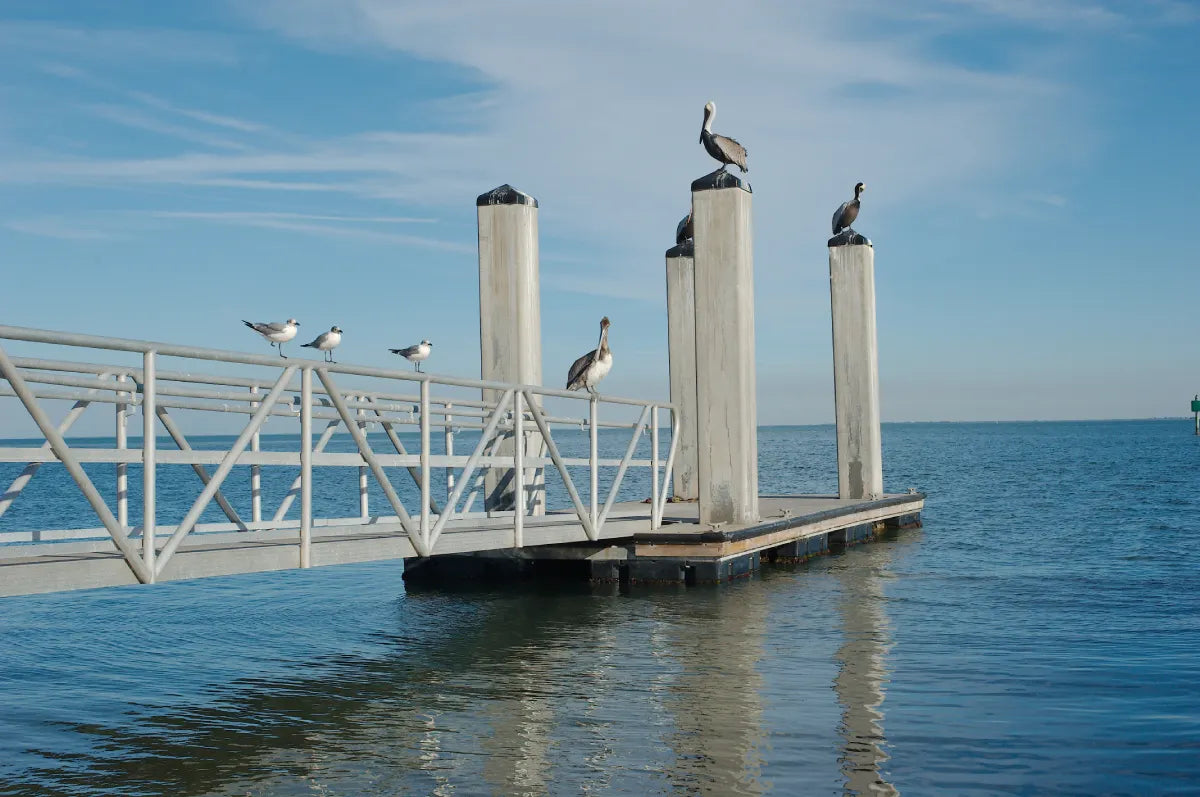
FAQs
WHAT IS A MOORING CLEAT?
Mooring cleats are fasteners that secure watercraft and other vessels to docks.
These simple dock accessories allow you to temporarily moor your boat or other watercraft, such as:
- Kayak
- Personal watercraft (PWC)
- Pontoon boat
- Powerboat
- Sailboat
- Sea-dog
However, even cargo vessels and cruise ships use mooring cleats when docking. The only difference is that mooring bollards for larger ships are a short vertical post rather than an S- or T-shaped dock cleat.
Docking cleats give you a place to tie your dock lines so your boat won’t drift away or bump into anything while at the dock.
HOW DO YOU USE MOORING CLEATS?
You attach the mooring cleats to the dock using fasteners. Typically, you secure them to the underside of a single plank using hardware like screws and washers.
For heavy-duty cleats, like cast iron, you should also include a joist corner. You mount it to the bottom of the plank and the post to form a right angle. This reduces the stress on the dock board.
Pro tip: never install your dock cleats between two dock boards. This can put unwanted stress on the boards and cause them to
- Become loose
- Break
- Crack
The dock cleat installation process may vary slightly depending on the type of cleats you use and how many you need.
WHERE SHOULD DOCK CLEATS BE PLACED?
You should place your dock mooring cleats at regular intervals along the dock edge. How far you space them apart will depend on the size of your boat and how many boats you want to dock at once.
Those with medium and large boats usually space them seven to ten feet apart, but use your best judgment. Accessibility is important, so having too many dock cleats is better than not having enough.
At a minimum, you should have two dock cleats per smaller boat, one for the stern line and one for the bow line. For larger boats, you should have at least three dock cleats per boat you plan to dock.
HOW DO YOU SECURE A BOAT TO A MOORING?
First, you need to consider how you will enter the marina. As you approach the dock, be mindful of the wind direction and currents, so you don’t slam into the dock.
You want to slowly approach the dock as parallel as you can, so you can easily secure your boat without problems. Coming in perpendicularly can cause damage to the bow.
Once you’re close to the dock, you or a crew member should toss the spring line to someone on the dock. Then, secure the line from the bow cleat to the dock cleat. You want to secure the line in front of the boat rather than next to the boat.
Next, secure the spring line from the stern line to a dock cleat behind the boat. Similarly, you don’t want it directly next to the boat but slightly behind it.
When you tie up your boat, you will wrap the spring line around the boat dock cleat in a figure eight. Then you can either tie a knot or leave the mooring line as is, depending on the type of dock cleat you’re using.
To ensure your boat remains secure and safe while moored, get snubbers for chafe protection and fenders (bumpers) for your boat.
You can also purchase a boat hook to grab the area you want to attach your dock line to without needing to leave the boat. This is a useful tool for when you need to dock without assistance.


